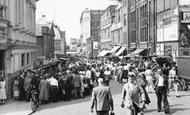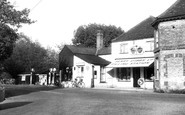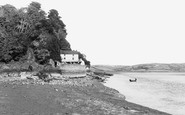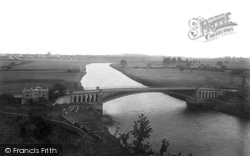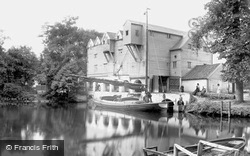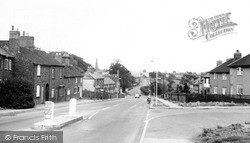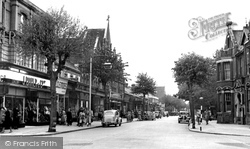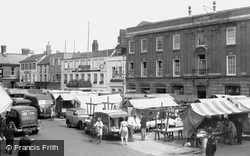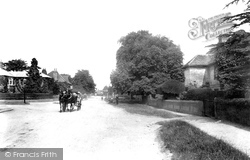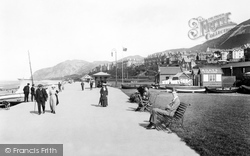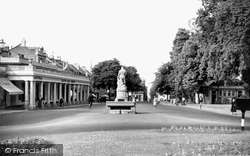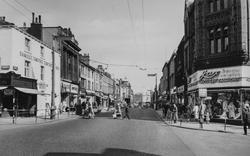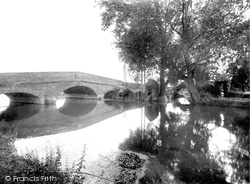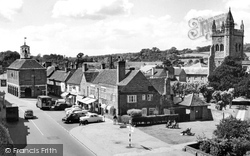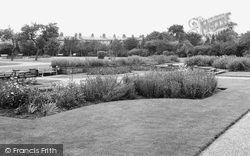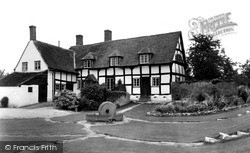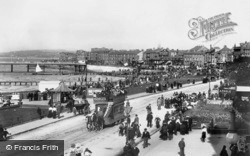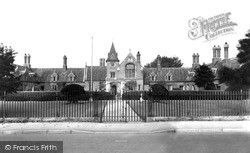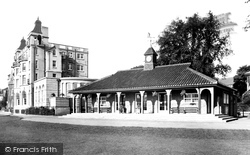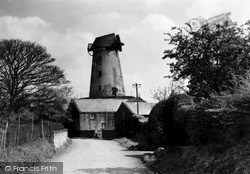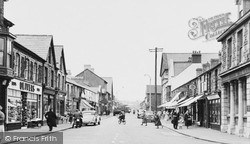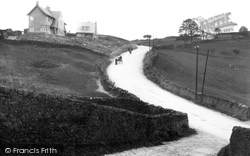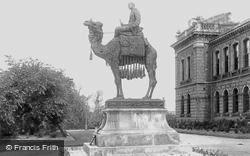Places
11 places found.
Those places high-lighted have photos. All locations may have maps, books and memories.
Photos
54 photos found. Showing results 1,381 to 54.
Maps
494 maps found.
Books
25 books found. Showing results 1,657 to 1,680.
Memories
9,954 memories found. Showing results 691 to 700.
Lymington In The 1940s
My maternal grandmother and mother were both born in Lymington, my mother attending the grammar school in Brockenhurst (I remember as a small boy her pointing it out to me from the train) In 1944, when the V1 'doodlebugs' ...Read more
A memory of Lymington in 1944 by
Coastguard Station
We came to Bolt Head in 1950, my father having joined the Coastguard service after being in the Royal Navy for 40 years. I found it quite a way to cycle to work, I worked in the post office in Malborough. I used to go ...Read more
A memory of Bolt Head in 1950 by
Bryn Gearge
I well remember Bryn Gearge ,when we were younger he lived across the back lane from our house. He raced pigeons and often we had to go and look for my father at dinner time as he would be talking to Bryn about pigeon racing.
A memory of Caerau in 1966 by
A Great Place To Live
Having been born and brought up in Buckhusrt Hill in the 1960s and 1970s and 1980s and now living in Kent, it reminds me what a unique place it once was. My immediate memories are of Lords Bushes and living in Forest ...Read more
A memory of Buckhurst Hill by
Growing Up In A Small Village
My parents moved to Twycross from London in the early 1960s. We lived on Sheepy Road next door to Mr Charlie Brooks and Louie Jones. On the opposite side were Stan and Ilma Jones and Len Gibbs and his daughter Joan. ...Read more
A memory of Twycross by
Cherished Memories
Finding this site has brought many wonderful memories back to me. I was born in St Mary's Hospital, Croydon. My maiden name was Chappell. I lived in Purley Road, South Croydon not far from the Red Deer until 1957. Every Saturday ...Read more
A memory of Croydon in 1953 by
The Gorse Br Staff Association Club
My mother and father (Charles and Lilian) ran the Club from 1954-1957 approx. We lived in just one part with a large living room, a kitchen which led to the back area of stables and grass and 4 bedrooms. ...Read more
A memory of Woodford Halse in 1954 by
Seaton In The 1950s And 60s
I lived in Seaton from the very early 1950s to the very early 1970s. My happy memories are: going down to the River Welland in Harringworth and fishing, going down to Seaton railway station and watching ...Read more
A memory of Seaton in 1950 by
A Glance Backwards
I came to live in Stadhampton in 1954 from Henley on Thames. My father was the village Policeman. I found that even for 1954 life in Stadhampton was comparatively primitive compared with what I was used to! But it was a ...Read more
A memory of Stadhampton in 1954 by
Holidays In Laugharne
I and my family stayed at the Ferry House, next to the Boat House from 1965 to 1973. The house was then owned by the wife of my dad's boss and we used to be able to go for a fortnight each summer. We used to park our car, ...Read more
A memory of Laugharne in 1965 by
Captions
2,019 captions found. Showing results 1,657 to 1,680.
A rough load of timber has been stacked on the banks awaiting collection.
When the throngs of summer visitors, yachts, launches and cruisers disappear with the swallows, the Broads sink back into their true nature, timeless and brooding.
The back of the Crown Inn can just be seen in the centre, where Station Road becomes Hinckley Road, curving south past the parish church, and on to Nailstone and Market Bosworth.
This view is from the footway outside Lloyds Bank. On the right is what was once the most important building in the town: the Railway Institute, built by the directors of the railway.
The Natwest bank to its right is over-scaled 1930s Neo-Georgian, while to the left of the White Hart two buildings have recently also been replaced in pallid Neo-Georgian.
Matthew Arnold died in Liverpool in 1882, but was brought back to his birthplace for burial.
Today, Penmaenmawr is a small, much-loved seaside resort overlooking Conwy Bay and backed by precipitous coastal mountains.
The rotunda (now occupied by a bank) can be seen on the left. It was built in 1826, and was a concert hall and ballroom.
In the 19th century, New Street became a banking location. The Cloth Hall was demolished amid much controversy in 1930 to make way for the new supercinema, the Ritz.
The bridge is built in greensand stone, which in Bedfordshire is actually dark brown owing to a high iron content in the rock.
Until 1939 the buildings on the right faced Church Alley and the backs of ranges of cottages a few feet away, demolished in that year.
In the foreground is the church primary school, parts of which date back to 1853, now much extended.
Central Park ran from Queensway to the back of Western Road, whose c1900 houses can be seen in the distance.
The tiny hamlet of Leigh lies on the east bank of the River Severn, perched on land just high enough to raise it from the floodplain, a few miles north-west of Cheltenham.
Facing us is Abbey Mill, whose origins date back eight centuries to the time when monks from the Benedictine monastery diverted the River Avon to power the mill to grind the corn that made their daily
This lovely view of the Promenade looks north towards Hest Bank, with the Central Pier in the background.
The village of West Retford, with its own medieval parish church, St Michael's, lies on the west bank of the River Idle, and has long been absorbed into the town.
Perhaps his greatest innings at the Oval was against Australia in 1926, when he made a century to help bring back the Ashes to England.
The first records of a mill here go back to 1321, but it is not known exactly how many mills have stood here in the intervening years to 1800, when the present mill was built.
There are also many retail outlets in evidence, as well as a branch of Midland Bank (now HSBC, of course) on the right.
The present manor house, Acorn Bank, dates from 1656. An historic herb garden, open to the public, is cared for here by the National Trust.
Do not shout too loud about it, though, as there are many locals who would rather it were back across the border.Tubber Hill is on the outskirts of Barnoldswick; running alongside it is part of the
The English were soon back, and work continued on the castle, but it stopped again a few years later when Henry de Lacy, distraught at the death by drowning of his only son in the castle well, wanted nothing
This 1890 bronze statue of General Gordon of Khartoum on camel-back was the work of E Onslow Ford, and commemorates his illustrious career. It was erected five years after the general's death.
Places (11)
Photos (54)
Memories (9954)
Books (25)
Maps (494)

